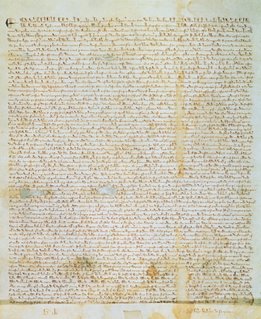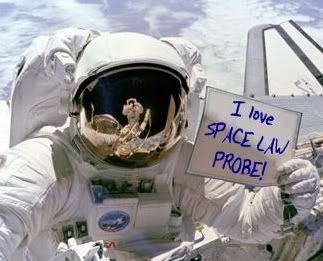1.30.2007
40 Year Old Magna Carta of Space Law
 January marks a few events in space history that are not so wonderful.
January marks a few events in space history that are not so wonderful.But this month here in the space-watching world we are also commemorating something that was no accident.
In January, 1967 the Outer Space Treaty or, more formally, the Treaty on Principles Governing the Activities of States in the Exploration and Use of Outer Space, including the Moon and Other Celestial Bodies (18 U.S.T. 2410, T.I.A.S. No. 6347, 610 U.N.T.S. 205) -- the document widely regarded as the Magna Carta of space law -- was opened for signature.
On January 27, 1967, in Washington, London, Moscow, the U.S. signed the Outer Space Treaty.
(For the record, the U.S. Senate ratified it April 25, 1967. President Johnson ratified it May 24, 1967. And on October 10, 1967, the U.S. ratification was deposited at Washington, London, and Moscow; that's the day, for better or worse, the Outer Space Treaty entered into force.)
(1967 was also the year of Super Bowl I; a new Chevrolet cost less than $2,500; Robert Oppenheimer died; the Beatles' Sergeant Pepper's Lonely Hearts Club Band was on the turntable; and lots more stuff was happening. You know. The sixties.)
It's not easy being an international treaty, and the OST certainly has its share of critics. You can spot the Treaty's flaws, shortcomings and unanswered questions from orbit. Legal scholars and others have lined up for decades to propose amending, redrafting, withdrawing from or abandoning the oft-times beleaguered Treaty.
But for now, as Prof. Reynolds points out, "Among all of the treaties relating to activity in outer space, the Outer Space Treaty of 1967 enjoys the broadest subscription and the highest regard. Although some of the regard for the Treaty may stem as much from sentiment as from any concrete benefit it provides--the Outer Space Treaty having been a triumph of consensus and forward-looking thought at a time when cold war tensions and narrow nationalism were the norm--the Outer Space treaty does accomplish a great deal."
The UN Office for Outer Space Affairs reports that (as of 1/1/06) 98 States have ratified and an additional 27 have signed the Outer Space Treaty; and summarizes the principles set forth in the treaty that "provides the basic framework on international space law" as follows:
States shall avoid harmful contamination of space and celestial bodies.
Unfortunately, Paul Dembling & Daniel M. Arons' excellent article, The Evolution of the Outer Space Treaty, 33 J. AIR L. & COMM. 419. 436 (1967) is not on the Web (it is excerpted in Prof. Reynolds' book).
Just a bit of background: Before the adoption of the 1967 Outer Space Treaty, we had UN resolutions and declarations, scholarly articles, speeches by government officials, other international treaties, etc. which served to help lay groundwork for the principles ultimately embodied in the OST.
In 1966, in meetings in New York and Geneva, the fifth session of the then 28-member Legal Subcommittee of the United Nations Committee on the Peaceful Uses of Outer Space, negotiated and reached agreement on most of the Treaty.
Speaking of the hardworking Legal Subcommittee, in 2007 the forty-sixth session of that body (now with 67 members) takes place March 26 - April 5, at the United Nation Office in Vienna, Austria. (Later I'll have more on this year's Legal Subcommittee agenda and other items.) Meanwhile, yes there's an archive of reports of the Legal Subcommittee, dating back to 1990 only -- in English, French, Arabic, Chinese, Russian and Spanish; or, if you prefer, and I often do not, the Subcommittee's unedited transcripts. (In fact, not to confuse matters but COPUOS itself will hold its 50th session this year, June 6-15, also in Vienna.)
To date, no lawyers have flown to space.
By the way, don't forget the University of Nebraska College of Law has scheduled a space law conference on March 2, 2007 to commemorate the Treaty's big four-oh.
And since this is 2007 it's also the 50th anniversary of the dawn of the Space Age, an epoch ushered in by the launch of the first artificial satellite, Sputnik 1 on October 4, 1957 (at 19:12 UTC, to be precise). And there will be lots of celebration about that.
* * *
IMAGE: Not exactly sure. It's either the Magna Carta issued by King John’s chancery in 1215, or a version of the OST in... Klingon?






